
Don't Break The Budget is a wacky budgeting game that combines the fun of an interactive card game with learning crucial money management skills. The goal is to successfully build your budget before anyone else does.
Budget breakers, lost jobs, or unexpected expenses are just some of the roadblocks you can place on your opponents. Whether played in a classroom, during family game night, or among friends, this is a competitive and fun way to learn key principles for creating a budget. This game can be played by two, three, or four players at a time. Card deck: 54 cards. Game duration: 20 minutes. Ages 8+
NEW! Now available in a braille version.
The goal is to build a balanced budget by allocating all your income among your financial priorities, ensuring that every dollar of your income is accounted for in your budget and your expenses do not exceed your income. Priorities matter, so build your budget in order of priorities A through E. The first person to accomplish this wins the round. The first player to win two rounds wins the game.

Review
A high school teacher provided this review: “My students played this game, and it was engaging. On the first round, we spent a bit of time trying to understand the game rules. I say 15 minutes. On the 2nd round, the game turned green, and it became competitive and loud. This card game allows participants to speak financial language, see financial events from a fun perspective, practice making financial decisions, and more. Great for Accounting, Finance, and Math skills. And fitting for family gathering!!”
- The deck consists of Income cards, Windfall cards, Life Happens cards, and Financial Priority cards, which are prioritized by letter: (A) Giving, (B) Savings, (C) Essential Expenses, (D) Important Expenses, and (E) Additional Expenses. Shuffle all cards and deal five cards face down to each player. The remaining cards are placed face down as the draw pile and the top card is turned face up next to it to start the discard pile. The player to the left of the dealer goes first, and the play continues clockwise.
- Each turn consists of the following:
- Draw: Take two cards from the top of either the draw pile or the discard pile. The cards can be either from the same pile or one from each pile.
- Action phase: Take up to three “actions.” An action consists of (1) using a card from your hand to build your budget, (2) swapping a card in your budget for one in your hand, or (3) playing a Life Happens card to cause a roadblock for an opponent.
- End of turn: conclude the turn by either drawing or discarding to maintain a hand of five cards. Replenish from the draw pile only.
- Build your budget by placing the cards face up in front of you. You must begin with one or more Income cards followed by Financial Priority cards in the prioritized order, A through E. The prioritized letters are found in the bottom left corner of the Financial Priority cards. An (A) card must be in the budget before a (B) card can be played, a (B) card must be in the budget before a (C) card can be played, and so forth.
- You can only have one full-time job or business; however, you can have multiple part-time incomes with or without a full-time job or business. Also, your budget can have only one Financial Priority card for each priority category. An exception applies if playing additional cards in any priority category (without exceeding three actions in a turn) allows you to balance the budget and win the round in that turn.
- Financial Priority cards cannot be placed in your budget that exceed your current income, however, Life Happens cards, when played on you, must be added to your budget regardless of income. Also, if you lose a budget card (Income or Financial Priority) all other cards remain in your budget regardless of income or priority category.
- Swapping: You may swap a card from your hand with a card in your budget to exchange it for the same category of a different value. You can do this multiple times in a turn, with each swap counting as one action. An Income card must be swapped for an Income card, and a Financial Priority card (with priority A-E) must be swapped for a card with the same priority letter.
- Windfall cards: Windfalls are unexpected good fortune. These cards will help build your budget or counter a Life Happens card.
- Life Happens cards create obstacles for others. They only take effect when they are played and not when they are drawn. You may play multiple cards on different players in a turn, but only one per player. If you do not wish to play these cards on other players, you may discard them. Keep in mind that the next player may pick up the card and use it on you.
- The Windfall "Bounce Back” and "Just Say No" cards are used as a counter when someone plays a card against you. The Life Happens “Scam” card, on the other hand, can be played at any time, even during someone else’s turn. The three-action-per-turn limit does not apply to these cards. Just remember to replenish your hand to five cards when played.
- Achieve a balanced budget by allocating income to priorities A through E, ensuring every dollar of your income is accounted for in your budget and your expenses do not exceed your income. You must include all five priority categories in the budget. The round concludes when a player successfully builds their budget. After each round, players reshuffle and deal cards to play again. The first player to win two rounds wins the game.
Sample Cards
Use your mouse or click on the arrow icons on the sides of the sample cards to scroll horizontally through the different sample cards.



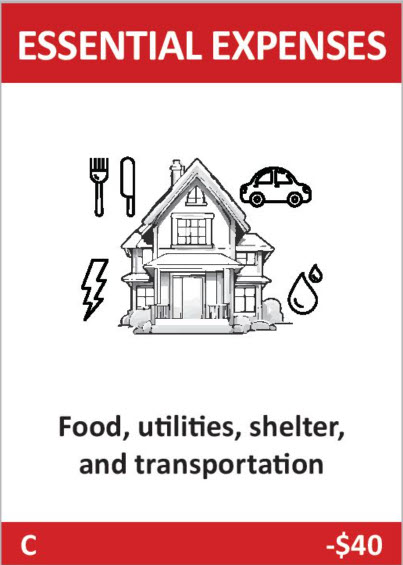
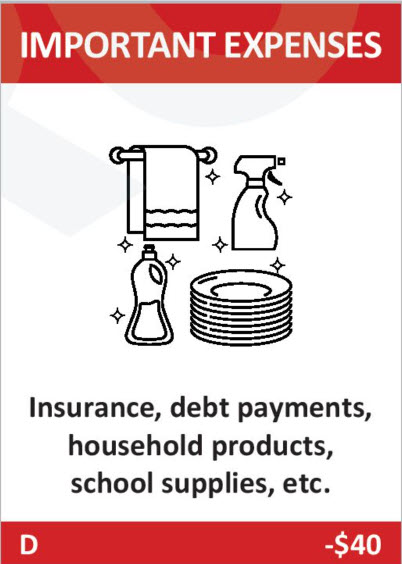
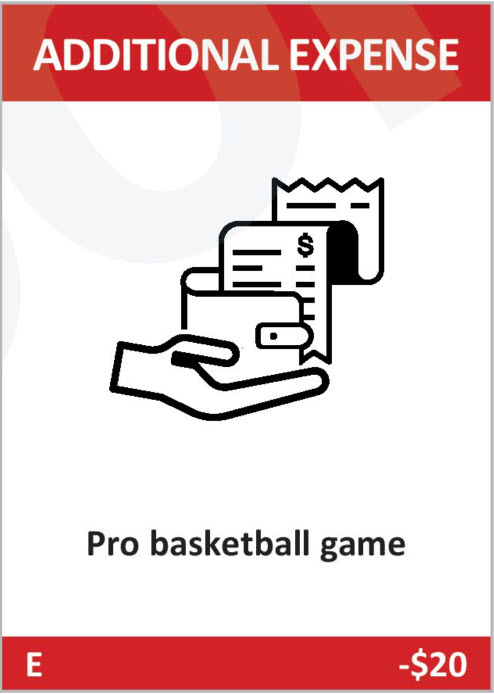
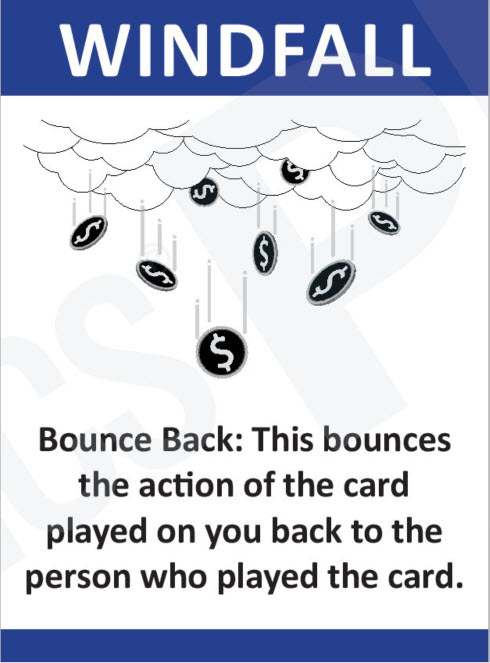
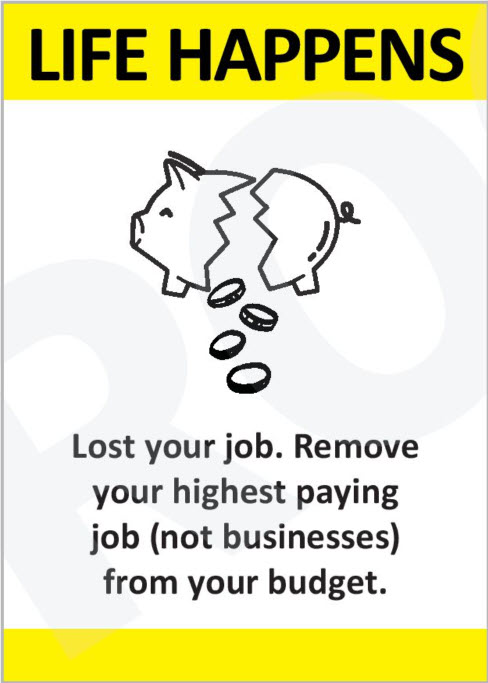
All cards © Copyright 2024 Don't Break The Budget (DBTB)
A message from the game's creator.
| While supplies last, we will ship orders as they come in. To order, please click on the “Buy Now” button or scan the QR code to the right to make a payment securely via GoDaddy Payments. The cost is $20 per game deck. If shipped to a Utah address, add $1.49 sales tax per deck. Shipping in the continental USA is $3 shipping for one deck and a flat rate of $5 shipping for two or more decks. Multiple-deck example: Three decks shipped to a Utah address would be $69.47, which is $60.00 for three decks, $4.47 sales tax, and $5.00 shipping. No sales tax applies to orders sent to non-Utah addresses. The braille version is now available. Because of a grant that subsidizes the extra production cost of the braille version, the cost of the braille version will be the same as the standard game. If you want a braille version, be sure to include in the note section that you wish to receive a braille copy of the game. |
  https://dontbreakthebudget.com/payment/ |
For information, send an e-mail message to info@dontbreakthebudget.com
I express my heartfelt gratitude to my amazing wife, Celeste, for her unwavering support and invaluable editing contributions. Special thanks to my daughter Eva for her outstanding design work on the card backs, and to my son Spencer for creating many of the captivating pictures on the front of the cards and his design of this website. A huge shoutout to my entire family — Celeste, Eva, Spencer, Cidlali, and Isaias — for their tireless testing efforts, ensuring the game's playability. I am profoundly grateful for their dedication. I also extend my appreciation to the Utah Small Business Development Center for playing a crucial role in testing, consulting, and refining the game, significantly shaping its development. Lastly, a big thank you to AlphaGraphics for their artistic touch. Thank you all for your invaluable contributions and support.
Warm regards, Adam Rushforth, Game Author
© Copyright 2024 Don't Break The Budget (DBTB)
All rights reserved.
Updated April 22, 2024